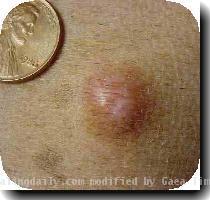Sexually transmitted diseases still rising; chlamydia hits a new record
By Mike Stobbe, APMonday, November 16, 2009
Sexually spread diseases up, better testing cited
ATLANTA — Sexually spread diseases continue to rise, with reported chlamydia cases setting yet another record in 2008, government health officials said Monday.
Last year there were 1.2 million new cases of chlamydia, a sometimes symptomless infection that can lead to infertility in women. It was the most ever reported, up from the old record of 1.1 million cases in 2007.
Better screening is the most likely reason, said Dr. John M. Douglas Jr. of the U.S. Centers for Disease Control and Prevention.
Syphilis, on the verge of being eliminated in the United States about 10 years ago, also has been increasing lately. About 13,500 cases of the most contagious form of the disease were reported in 2008, up from about 11,500 the year before.
Unlike chlamydia, health officials think syphilis cases actually are increasing. Syphilis rates are up among both gay men and heterosexuals, said Douglas, director of the CDC’s Division of STD Prevention.
Syphilis can kill if untreated, but chlamydia is not life-threatening. Neither is gonorrhea, which seams to have plateaued in recent years. Gonorrhea cases dropped to about 337,000 cases in 2008, down from about 356,000 cases.
Girls, ages 15 through 19, had the largest reported number of chlamydia and gonorrhea cases, accounting for more than one in four of those cases. But they’re often screened more than other people, since 1993 federal recommendations that emphasize testing for sexually active women age 25 and under.
The government estimates there are roughly 19 million new cases of sexually transmitted disease annually. Experts say the most common is HPV, human papillomavirus, which can cause genital warts, cervical cancer and other cancers.
The government doesn’t ask doctors to report every HPV case, but estimates the virus causes 6.2 million new cases each year. That is an old estimate, based on data from 2000, before a vaccine against some types of HPV came on the market in 2006.
The CDC estimates there are 1.6 million new cases of genital herpes each year, but that too is an old estimate for a non-reportable disease.
The agency also estimates there about 56,000 new cases of HIV each year.
On the Net:
The CDC report: www.cdc.gov/std/stats/
Tags: Atlanta, Diseases And Conditions, Georgia, Infectious Diseases, North America, Sexual And Reproductive Health, Sexual Health, United States
|
November 16, 2009: 2:03 pm
Scientists Discover A Cure For Low Libido (impotence) which Is totally natural Published Friday, 21 September 2009 • Karolinska Institute, CKK Urologic Oncology Group, Stockholm, Sweden. |


Dr Andrew Carr